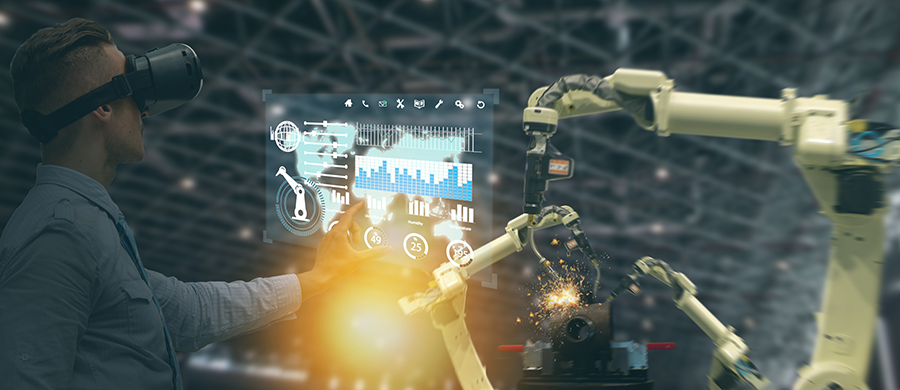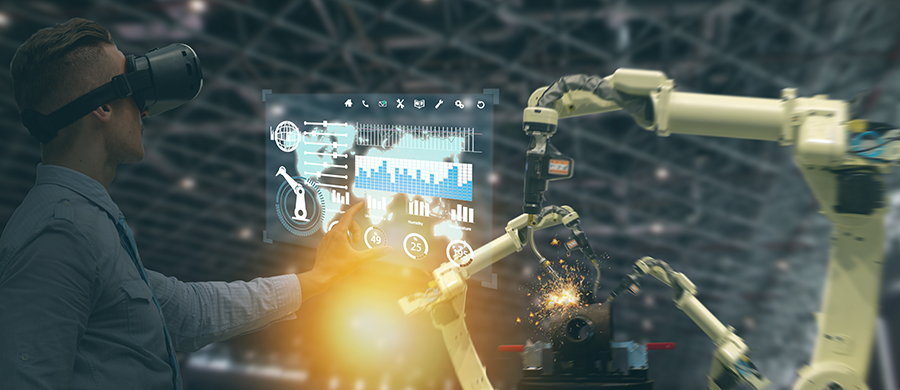

Joe Ligori, Information Technology
Here’s a gap that should keep manufacturing executives up at night: a recent survey found that 71% of organizations overall have implemented some kind of data governance program, but only 39% of manufacturers have been able to successfully scale these initiatives beyond a single value stream. It’s like having a state-of-the-art security system that only covers your front door while leaving every window wide open.
This gap between adoption and execution couldn’t come at a worse time. Automated manufacturing generates unprecedented data volumes—terabytes to petabytes daily—while facing a 400% increase in IoT-targeted cyber threats. Companies that bridge this execution gap are seeing upwards of 5% of total revenue in benefits from data and AI initiatives. Those that don’t? They’re losing an average of $12.9 million annually to poor data quality alone.
In this article
- Manufacturing’s data governance paradox: widespread adoption (71%) but limited scalability (39%) creates massive opportunity gaps.
- Unique sector challenges include TB-to-PB daily data volumes, microsecond response requirements, and 400% increase in cyber threats.
- Legacy system integration remains critical—70% still use spreadsheets while deploying cutting-edge IoT.
- Business value is proven: leaders achieve 10-20% efficiency gains and millions in cost savings.
- Three-tier architecture (Edge-Fog-Cloud) provides the framework for scalable governance.
- Success stories from P&G, Toyota, and Unilever demonstrate real-world transformation.
The perfect storm of manufacturing data challenges
Today’s automated manufacturers aren’t just making products—they’re producing data at a scale that would have been unimaginable just a few years ago. Industrial IoT sensors, for example, generate measurements on scales ranging from milliseconds to minutes, creating data streams that can overwhelm traditional systems. A single production line might have thousands of sensors monitoring everything from vibration patterns to thermal signatures, each pumping out readings continuously, and informing predictive maintenance protocols. This is not to mention the other data captured as part of the production line.
But volume is only part of the challenge. Manufacturing automation requires sub-second decision-making for safety-critical operations. When a sensor detects an anomaly in a high-speed production line, you have milliseconds, not minutes, to analyze and respond. This real-time requirement fundamentally changes how data must be governed, processed, and protected.
Then there’s the sobering reality of cybersecurity. Manufacturing has become the most targeted sector for IoT cyber attacks, accounting for 54.4% of all reported incidents. Every connected sensor, every data stream, every integration point becomes a potential vulnerability that must be secured without compromising operational speed.
When yesterday meets tomorrow: The integration challenge
Perhaps nowhere is manufacturing’s data governance challenge more evident than in the collision between legacy and modern systems. Consider that 70% of manufacturers still manually enter data into spreadsheets, while simultaneously deploying industrial IoT solutions and AI-powered analytics.
This isn’t entirely technological stubbornness—much of it is just grappling with practical reality. A factory floor might have PLCs from the 1990s running alongside brand-new vision systems with embedded AI. Legacy equipment using Modbus protocols must somehow communicate with cloud platforms expecting MQTT or OPC-UA. It’s like trying to get a rotary phone to send text messages.
Now imagine having a number of factories with different equipment, some modernized and other legacy systems and comparing performance between them. We’ve seen firsthand companies running six different plants, each with a different way of entering data. And the challenge extends beyond protocols: governance must accommodate different data formats, sampling rates, and quality standards across systems that were never designed to work together.
Yet this integration is non-negotiable: those legacy systems often control mission-critical processes that can’t simply be replaced. What’s needed is, first, a robust data review and an honest accounting of the various formats, processes, and methodologies each production line is already using. Only then can a company create a strategy for handling and manipulating data to efficiently gather insights and make informed decisions.
The business case writes itself
While daunting to implement, when manufacturing data governance works, the results can be staggering. Procter & Gamble’s AI-powered supply chain optimization eliminated hundreds of labor hours previously spent on manual data integration. By creating unified data governance across five divisions, P&G accelerated product development dramatically, launching new products like Pringles Prints in under one year versus the previous two-year timeline.
Toyota invested $11.1 billion annually in ICT focused on AI, IoT, and data analytics, achieving a 50% reduction in development time through their hybrid cloud AI platform. Perhaps most impressively, they were able to democratize AI development in a way that enables factory floor employees to build solutions without extensive programming knowledge.
Unilever’s master data management transformation has trimmed vendor onboarding from a days-long process to mere hours, across 190 countries and 400+ brands. This isn’t just efficiency—it’s competitive advantage at scale.
Three tiers to transformation
At the heart of each of these transformations is a methodical approach to data integration, systemization, and governance. Most commonly, this takes the form of a three-tier architecture—often referred to as Edge, Fog, and Cloud—that has emerged as the definitive framework for manufacturing data governance.
- At the edge layer, smart sensors and PLCs perform immediate processing and protocol translation, converting legacy Modbus to modern MQTT in real-time. This enables microsecond response times for safety-critical operations while reducing bandwidth through local filtering.
- The fog layer hosts Manufacturing Execution Systems (MES) and historians, providing the intelligence bridge between shop floor and enterprise. Here, data quality validation occurs in real-time, checking accuracy, completeness, and consistency before data moves upstream.
- Finally, the cloud layer enables enterprise-scale analytics and compliance management. Data lakes built on platforms like AWS or Azure provide virtually unlimited storage and processing power, while maintaining strict governance controls for regulatory compliance.
The path forward is clear
Manufacturing’s data governance challenge isn’t going away—if anything, it’s accelerating. But the blueprint for success exists. Companies achieving the best results follow a consistent pattern: start with pilot programs on single production lines, prove ROI through reduced downtime and quality improvements, then scale systematically using three-tier architecture principles.
The gap between data governance adoption and successful scaling represents one of manufacturing’s greatest opportunities. With proven frameworks, mature technology platforms, and compelling success stories from industry leaders, the question isn’t whether to invest in comprehensive data governance—it’s how quickly you can close the execution gap before competitors do.
Ready to transform your manufacturing data from an overwhelming challenge to a strategic asset? Learn how Eclipse Automation’s automation integration services, incorporating three-tier data architecture principles, can help you achieve scalable data governance across your entire operation.

Get in touch to explore how our Advanced Engineering Services can help you move faster without compromising results.
